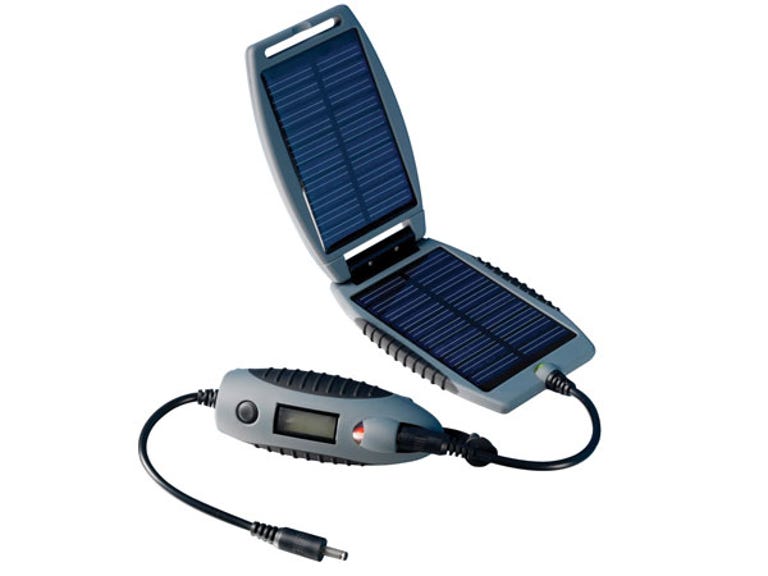 Why You Can Trust CNET
Why You Can Trust CNET Powermonkey eXplorer review: Powermonkey eXplorer
Powermonkey is a heavy-duty power pack for recharging your mobile devices whether you're a city slicker like us or a rugged bushman alike. Though it's a shame the adapters aren't as sturdy as the battery itself.
Battery life: the bane of every portable tech lovers existence. One day we might be able to charge our phones using the power of good will or the heat our body expels, but in the meantime we look to rechargeable battery packs as a solution.
The Good
The Bad
The Bottom Line
The Powermonkey eXplorer belongs to a larger family of simian power packs under the Powertraveller umbrella, including the Powergorilla and Powerchimp. While the others play with larger tech, the Powermonkey is designed to work with mobile phones and MP3 players, like Apple iPods. Along with a selection of adapters and wall socket extensions, the retail kit includes a 2200mAh battery and a solar panel to be used as an alternative recharging method in areas where you're likely to be without access to mains power or a PC to piggyback on.
2200mAh is an excellent size for a battery of this kind. If you consider that the largest smartphone battery we've seen is 1500mAh and that most phone batteries are approximately 900mAh, then the Powermonkey should equate to between one and a half to two full charges of your phone.
Charging the battery takes about four hours, which is quite fast. Recharging via USB will take a little longer again and Powertraveller estimate that six hours collecting the sun's energy should give you about a third of a full battery charge or one standard mobile phone charge. We found using the solar panel tricky from inside our office and at home with it resting like a hot apple pie on the kitchen window sill. It obviously works better outdoors under direct sunlight, but it doesn't seem designed to replace mains power for city slickers like us.
The range of connections is impressive, including proprietary connections for Samsung, LG, Nokia and Sony Ericsson phones, as well as standard connections for devices using the mini or standard USB. The sales kit doesn't come with a micro USB connection, however, which is disappointing considering that micro USB is now the European standard for a universal mobile phone charger and most new phones we're seeing now are using this size socket.
It also includes a 30-pin iPod/iPhone connection, which is shockingly frail. While the other connections seem to be sturdy, the iPhone connection literally fell apart in our hands, a gentle jiggle of the connection and the plastic cracked open. Ordinarily we might put this down to a one-off production fault, but after hearing the same story from a colleague, we think this issue might be more widespread. If you are in a phone store checking out the powermonkey, make sure you ask to see the iPhone connector before you hand over your money — for AU$150 you want good connectors at the very least.


